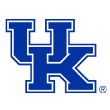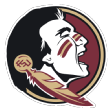Next Hack-a-Shaq victim: Andre Drummond
In his fourth season, Detroit Pistons center Andre Drummond has been one of the league's most exciting young players. With Pistons coach Stan Van Gundy building an attack around his skills, Drummond already has three 20-20 performances in Detroit's first eight games.
Unfortunately, Drummond's play means fans might see less of him dominating the paint and more of him where he's worst: at the free throw line. So far in his NBA career, Drummond has actually been a worse foul shooter (39.6 percent) than his opposing number on Saturday, Los Angeles Clippers center DeAndre Jordan (41.5 percent career, and 40.2 percent over the same span). Yet Jordan has been intentionally fouled more than five times as frequently as Drummond over that period.
With Detroit playing like a playoff contender early in the season and Drummond proving he's one of the league's top centers, expect him to emerge as a Hack-a-Shaq target like fellow big men Jordan, Dwight Howard and namesake Shaquille O'Neal before him.
Who gets hacked and why
Thanks to my research last year in identifying every intentional foul of a poor free throw shooter I could find over the past three seasons, I'm able to study how well various factors predict the likelihood of a player getting hacked.
There are four main factors. Naturally, the dominant factor is free throw shooting, which explains about 20 percent of the variation in intentional foul rates.
Regression analysis of the data suggests an otherwise average player will get hacked twice as frequently for every 10 percent worse he shoots from the line. In other words, a 50 percent free throw shooter will get fouled twice as often as a 60 percent shooter, but only half as often as a 40 percent shooter like Drummond or Jordan.
Once foul shooting has been controlled, the relationship with other factors is evident. Three more showed up as statistically significant:
- Player quality, as measured in this case by player win percentage, which is the per-minute version of my wins above replacement player metric
- Minutes per game
- Team win percentage
Take Jordan, for example. He has always been a poor free throw shooter, but as recently as 2012-13, he was intentionally fouled just 13 times all season. That total went up more than 10 times to 137 in 2014-15, including the playoffs, as Jordan developed into an All-NBA center.
Team success is important as well. Of the 71 stretches when a player was hacked during the 2014-15 regular season, 52 of them (73 percent) came when his team was leading. Since intentional fouls are most frequently used to extend games and facilitate comebacks, players on winning teams are inevitably targeted more than those on lottery clubs.
Drummond becomes a target
When I wrote about intentional fouls last season, I noted Drummond as the most obvious candidate who had rarely been hacked -- just 13 times all of 2014-15.
In the context of his team, as noted by the Piston Powered blog, the non-fouls made more sense. Detroit hasn't won more than 32 games in a season since Drummond's arrival, and his prodigious box-score production outstripped his ability to influence games as measured by ESPN's real plus-minus.
This year looks like a different story. Detroit is off to a 5-3 start, and Drummond's development is a big reason why. Playing with more space now that the Pistons have replaced Greg Monroe's overlapping skill set with stretch-4s likeErsan Ilyasova, Marcus Morris and Anthony Tolliver, Drummond has averaged 18.8 points and a league-leading 19.3 rebounds per game this season.
Alas, his woes at the free throw line haven't gotten any better: Drummond is shooting 39.3 percent from the charity stripe.
Teams usually have two goals when intentionally fouling players like Drummond. One, naturally, is the hope that his poor foul shooting will produce less efficient offense. Indeed, Drummond is 1-of-10 from the line after hacks this season and has shot 25 percent following intentional fouls over the past two years.
The other potential benefit is putting a good player on the bench. And that's where Drummond may now be the league's most attractive target for intentional fouls.
After all, the Clippers can at least go to talented veteran Josh Smith when Jordan is struggling at the line. Monroe's departure has left a hole behind Drummond on the Pistons' depth chart.
Detroit signed former San Antonio Spurs center Aron Baynes to a three-year, $19.5 million deal to back up Drummond, but according to NBA.com/Stats, the Pistons have been outscored by 23.4 points per 100 possessions with Drummond on the bench. That partially reflects the overall weakness of Detroit's second unit, which has been battered when Drummond and starting point guard Reggie Jackson rest simultaneously.
The Pistons have been far more effective when Drummond -- instead of Baynes -- plays with backup point guard Steve Blake, however. So anytime Van Gundy is forced to remove his starting center -- as he did in the face of intentional fouls in the fourth quarter last Friday at Phoenix -- it's a win for opponents.
The game against the Suns, which Detroit ended up winning, is one of just two times this season Drummond has been intentionally fouled. If the Pistons keep winning and Drummond continues dominating, expect more in the future.
In fact, based on the past track record of intentional fouls, projections for player win percentage and free throw percentage from my SCHOENE projection system and team win percentage from ESPN's Basketball Power Index, Drummond is as likely a target as Jordan.
EXPECTED INTENTIONAL FOULS PER 36 MINUTES
Player Team PF/36 2015-16 Total
DeAndre Jordan LAC 0.26 9
Andre Drummond DET 0.26 5
Ian Mahinmi IND 0.13 3
Hassan Whiteside MIA 0.12 0
Andrew Bogut GSW 0.12 0
Dwight Howard HOU 0.11 0
Mason Plumlee POR 0.10 0
Steven Adams OKC 0.10 0
Ed Davis POR 0.10 0
Clint Capela HOU 0.10 0
Beyond Dwight and DeAndre
Part of NBA commissioner Adam Silver's rationale for why the league didn't press to outlaw the Hack-a-Shaq last summer was the limited number of players being intentionally fouled. "For the most part, it's two players," he said in May, referring to Jordan and Howard. "So then the question becomes, should we be making that rule change largely for two teams and two players?"
We can safely add Drummond to the list as a third player, and now that Ian Mahinmi is starting for the Indiana Pacers, expect him to get hacked more frequently, as well. The trend continues to move toward more intentional fouls. There have already been 19 of them this season, nearly as many as I tracked last season through the month of December (22).
Drummond and Jordan can be thrilling to watch around the rim. Let's hope they get that opportunity on Saturday, rather than dueling at the free throw line.





















